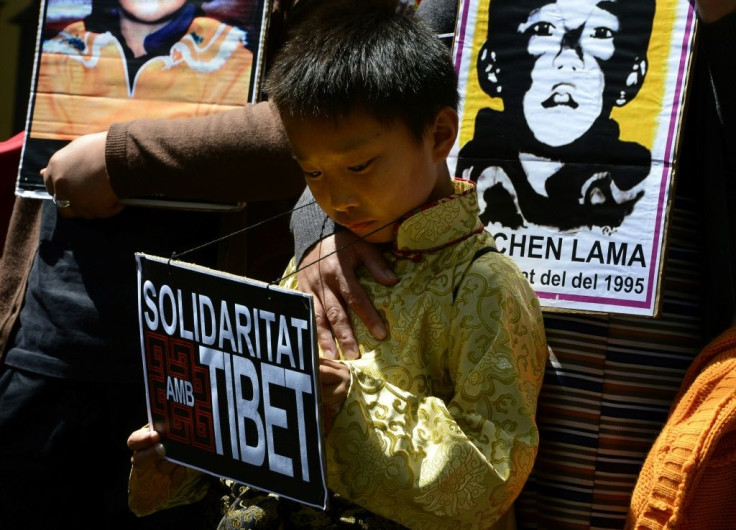China's Repression In Tibet: Boy Panchen Lama Who Disappeared 25 Years Ago Now A College Grad
Tibetan Buddhism is the dominant religion in the landlocked country that is bordered on three sides by China and on the south by the Himalayan Mountains. It is home to Mt. Everest, the world’s highest elevation above sea level and is the birthplace of the fourteenth and current Dalai Lama, the spiritual and political leader of Tibet.
In 1959, following the brutal suppression of the Tibetan national uprising in Lhasa by Chinese troops, the Dalai Lama was forced to escape into exile in northern India where he still lives and continues his duties at age 84.
The second ranking spiritual authority in the Gelug school of Buddhism is the Panchen Lama, who plays a role in the process by which each new Dalai Lama is chosen. The Panchen Lama is named by the Dalai Lama with the help of Tibetan lamas trained in reading portents and signs.
On May 14, 1995, the then 59-year-old Dalai Lama named 6-year-old Gedhun Choekyi Nyima as the 11th Panchen Lama. Three days later the boy and his family were kidnapped by Chinese authorities.
Claiming that the Panchen Lama, a reincarnate, can only be chosen by pulling lots from a golden urn, China selected another young boy named Gyaltsen Norbu to assume the role using the golden urn method. The name of the abducted boy was not in the urn.
The now 30-year-old Panchen Lama is believed to spend most of his time in Beijing as a political figure under Beijing’s control and shares none of the Dalai Lama’s global fame.
The twenty-fifth anniversary of the naming of the kidnapped boy as Panchen Lama has led to calls from the Tibetan parliament-in-exile to China to disclose the whereabouts of who they consider the true Panchen Lama.
The exiled Tibetan parliament in northern India, known as the Kashag, released a statement that read, “China’s abduction of the Panchen Lama and forcible denial of his religious identity and right to practice in his monastery is not only a violation of religious freedom but also a gross violation of human rights.”

Never shy about commenting on wrongdoings by China, the U.S. issued a statement from Secretary of State Mike Pompeo calling on China to “immediately make public the Panchen Lama’s whereabouts and to uphold its own constitution and international commitments to promote religious freedom for all persons.”
China’s foreign ministry spokesperson Zhao Lijian issued a response saying that Gedhun Choekyi Nyima “received free compulsory education when he was a child, passed the college entrance examination and now has a job.”
Zhao said neither the now-31-year-old man or his family wishes to be disturbed in their “current normal lives.” He gave no other details.
At stake is the future of Tibetan Buddhism, which still commands heavy sway over the people of the Himalayan region. The Panchen Lama will have a role in choosing the replacement for the current 84-year-old Dalai Lama.
Just like China has done with Taiwan, Hong Kong and the South China Sea, it claims that Tibet has been its territory for centuries. According to Free Tibet, a non-profit, non-governmental organization aiming at Tibetan liberation, the Chinese government is imposing its control through threat and violence. What better way to exert more control than with a Chinese hand-picked and probably indoctrinated Panchen Lama?
Many Tibetans disagree with China, believing they are largely independent of the Communist atheistic giant.
© Copyright IBTimes 2024. All rights reserved.





















